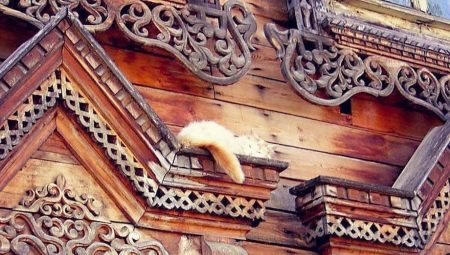Own home is the basis and support of man. This is the place where time stops, where you feel safe. Every self-respecting landlord wants his house to look beautiful, cozy and even luxurious. To emphasize the uniqueness of a wooden house, house carving will always help: carved platbands, cornices and other elements of wooden architecture. In the old days, all houses were decorated with wood carvings: the larger and more complex such details, the richer the house and its owner were considered.
Each ornament and pattern is unique. Moreover, each region has its own traditions of wooden architecture.
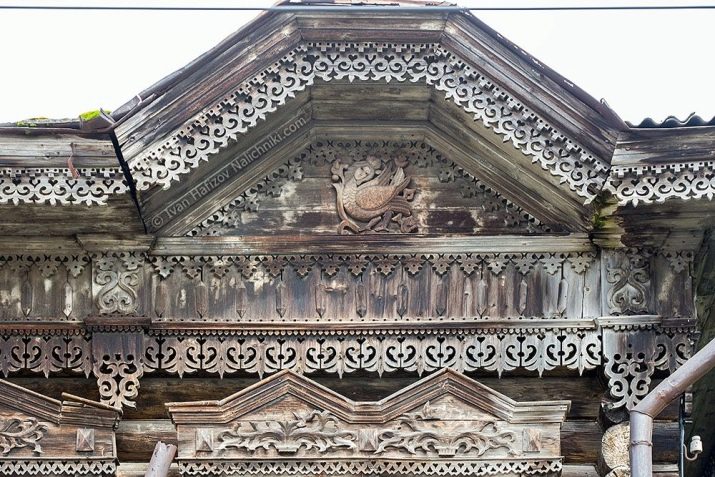
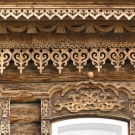
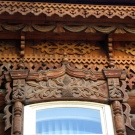
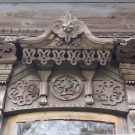
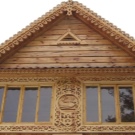
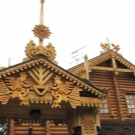
History
How it all began - no one will remember, there are a lot of different guesses and versions. Wood as a material has been known to man since ancient times. Perhaps it all began in ancient times with a notch on a tree. The oldest example of woodcarving is attributed to the Mesozoic period, but as a decoration of the home, this phenomenon spreads during paganism. Later, such carvings will be called "ship", when some decorative elements will be transferred from ships to wooden architecture.
The first carved elements were primitive: geometric figures, lines and religious pagan symbols. The window and doorways were primarily decorated with carvings: it was believed that the application of the corresponding charms would protect the house from the penetration of evil spirits. Such symbols could not only impede evil spirits and evil spirits, but also attract luck and prosperity into the house. In this way the first traditions of wooden architecture were formed.
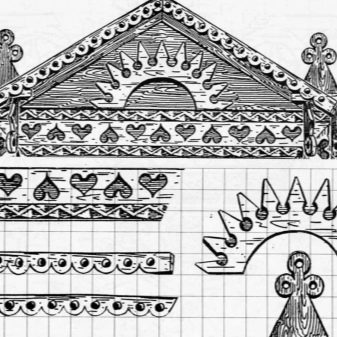
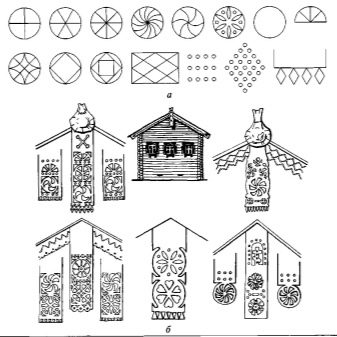
Then, primitive nicks and ornaments turned into smooth lines and patterns. Religiosity began to give way to aesthetics, retaining some forms. The pediments and cornices began to decorate with carving, the carved elements began to carry other functions: to cover the cracks, openings and ends of the log cabins. Nowadays, house carving is mainly aesthetic in nature and can be the most intricate composition.
It is believed that the most beautiful "wooden lace" can be found in the Russian North (Vologda and Arkhangelsk regions) and in the Volga region.
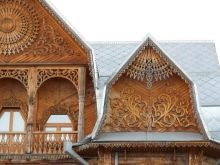
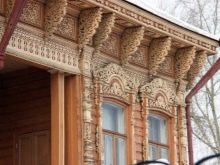
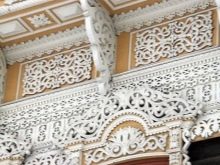
Characteristic
Wood is a lively, warm, breathing material that is pleasant to hold in your hands. For carved elements, conifers are used. This is characteristic of wooden architecture and a large layer of art carving. This is due to the fact that in the construction of wooden houses (from timber and round timber) mainly conifers are used. Coniferous trees also have other important advantages: ease of processing with primitive tools, accessibility and mass material.
Overhead elements on the external and internal parts of the house create unique interiors and exteriors. Using even simple elements, you can create comfort in the living room or emphasize the individuality of the carved facade. Also, individual elements and figures can be combined by changing the pattern, in which case entire compositions are created. These are decorated with cornices and pediments of traditional wooden houses.
Carved thread looks modest, but if the elements are superimposed on each other in several layers - the effect of volumetric lace is created. On cornices, gables and platbands such decorations look luxurious and produce the effect of increasing the home.

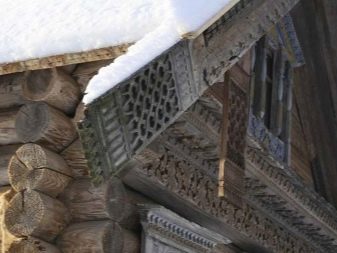
Three-dimensional sculptural carving, called shipbuilding, gives a certain luxury to the appearance of the house. Carved beams and supports inside the house give the impression of massiveness, quality factor. The sculptures made of wood, made at the proper level, impress. Traditionally, the head of a horse or poultry is carved on the roof ridge.
Allocate a separate type of thread, such as "Nizhny Novgorod" (aka "baroque thread"). It is a hollow embossed carving, spread on the frontal board and platbands in the Nizhny Novgorod region: patterns and ornaments, whole plots fit on boards and wooden massif. Such beauty adorned the Volga ships, from where the carving originates. Russian carving adorns the homes of many regions of Russia. Each has its own traditions of appearance and methods of its implementation. Among all this diversity, two similar ornaments or plots cannot be found.
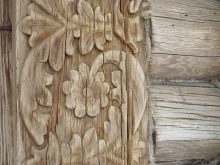
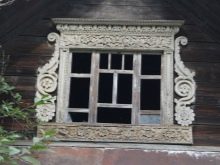
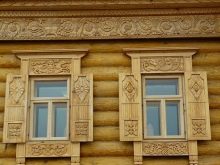
Kinds
There are several main directions of this folk art:
- slotted;
- blind embossed;
- sculptural.
A slotted thread refers to a thread made through a through cut: it does not have a background, cuts in a board are made with a jigsaw. It is of varying complexity openwork patterns, "lace", geometric shapes and other elements. All these elements can be combined overlapping each other.
Most often, such elements can be found on windows as platbands, in the form of cornices and on door jambs, also found on the porch or in the form of flat balusters. Popular and distributed without exaggeration in all regions.
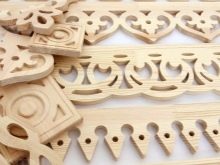
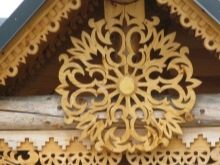
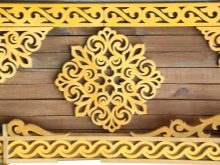
Dull relief carving is a three-dimensional figures, shapes and ornaments made on a dull background. Such carvings are performed more often on gables and end boards, in the design of balconies, less commonly found on window frames and door jambs. Geometric figures made in this format have pagan roots and carry the function of amulets. Frequent plots of this type of carving are the vine, mystical characters, animals, plants (leaves, shoots and other elements), as well as astrological subjects.
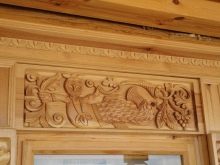
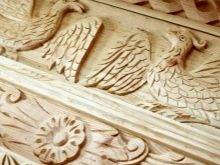
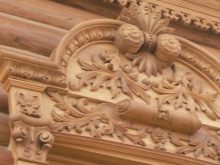
Sculptural carvings are three-dimensional figures and shapes, both carved as a composition in solid wood, and fully voluminous and tactile tactile. It is this carving that is called ship carving; the tradition of decorating the bow of the ship has migrated to land: roof skates are decorated with figures of animals and birds. Also, in the technique of sculptural carving, wooden columns (for example, on the porch), beams, balusters and other load-bearing elements are made, found on window frames and pediments.
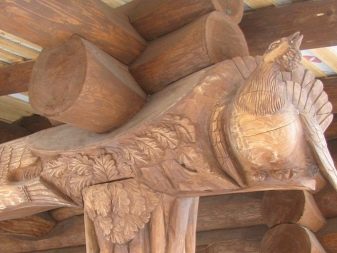
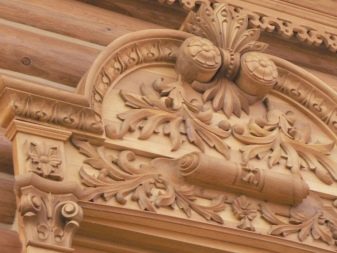
Execution technique
Wood is a living material that does not forgive mistakes. Preparation and processing of wood for further woodcarving is painstaking work. When it comes to delicate work, artistic carving of individual elements of house carving: one awkward movement with a cutter and it is not so easy to correct a mistake. All these processes are usually performed with simple tools: an ax, a saw, a jigsaw and a drill, chisels, knives and cutters. Each type of work has its own technique. Let's consider in more detail separately.
Modern threading technique for each type of its own. One thing is common - drawings. First, drawings are studied, if necessary, templates and patterns are made to transfer the picture to a planed board.
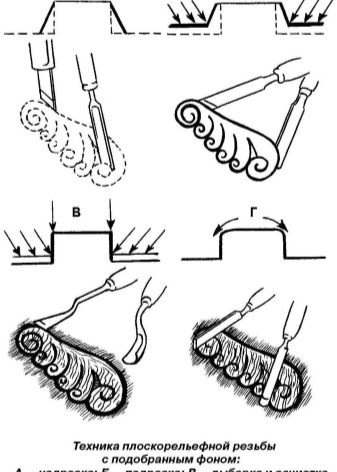
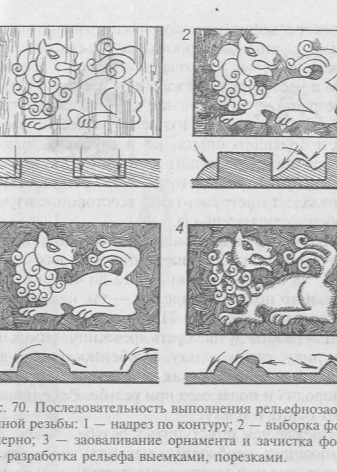
Through slotted thread is performed in the prepared dried board with sharp cutters. It is believed that hardwood is preferable in this work, but often coniferous wood, which is used everywhere for construction, is at hand. Conifers are prone to cracking, can crack in the most inappropriate place and ruin the workpiece, so the drawing is applied manually or by means of a stencil with the expectation that the cuts will not break the fibers sharply across. Where it is required to cut the internal pattern, a hole is drilled, then gently cut with a jigsaw. Then the element is polished, varnished or painted, depending on the author’s ideas.
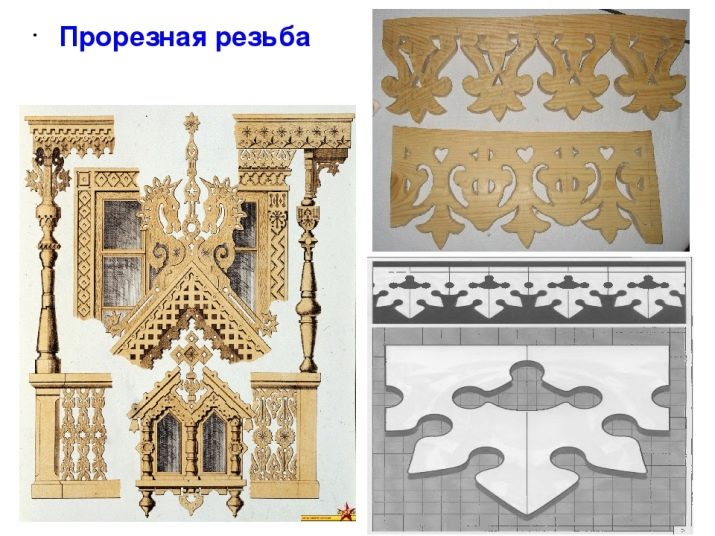
Relief carving requires some experience and a certain level of skill. According to the drawn sketch, the depth of the ornament is pretended, then it is carefully cut and scraped out with appropriate tools. The workpiece is ground, in hard-to-reach places the skin is bent and also ground, someone uses special grinding machines. Then it is also varnished, antiseptic impregnation or paint.
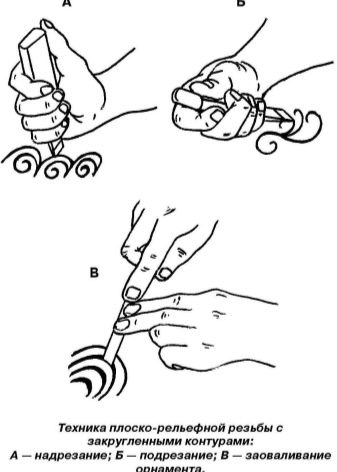
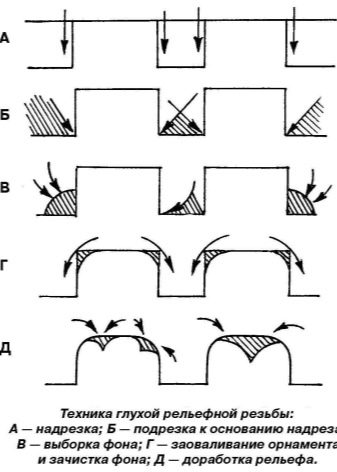
Volumetric sculptural carving is performed in a bar, log or other wooden massif. The material is inspected for cracks and other defects. Drawing put in bold pencil, estimate the depth of cuts. Work is carried out with a chainsaw, ax and other tools. Then it is ground and coated with paints and varnishes.
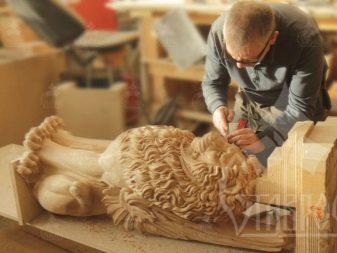
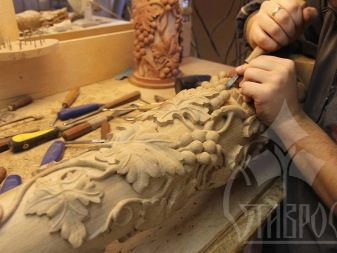
Workshop on house carving see below.
